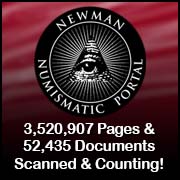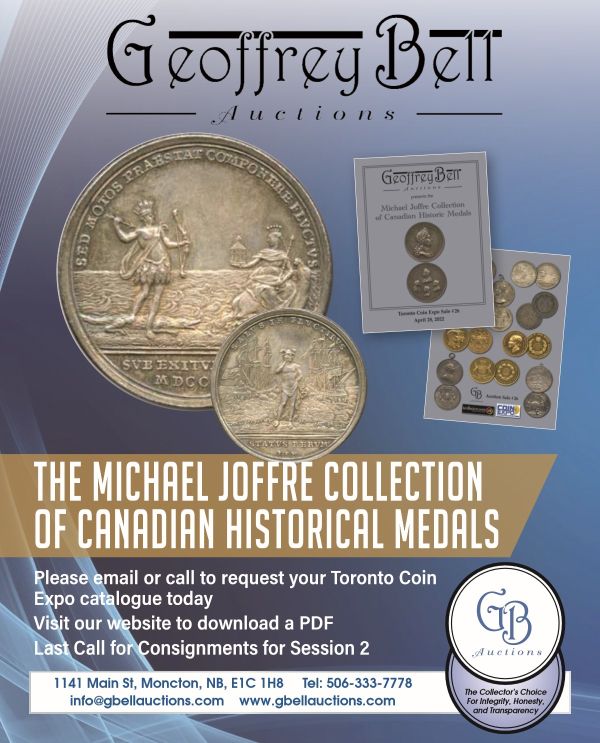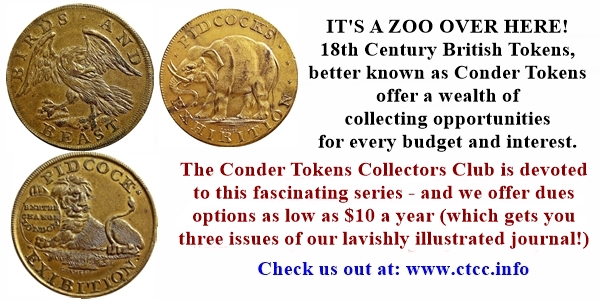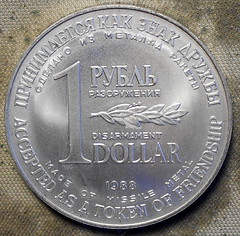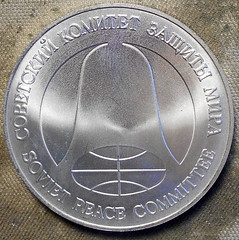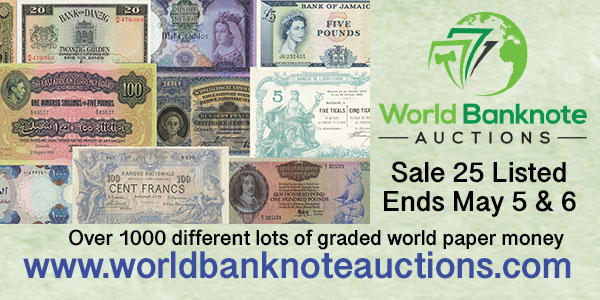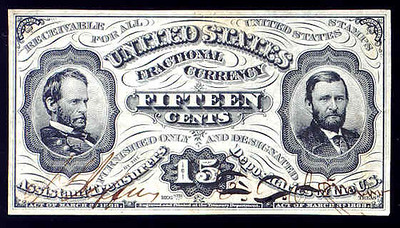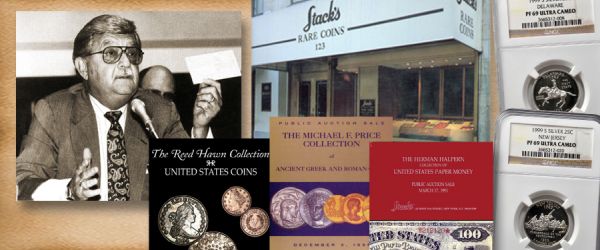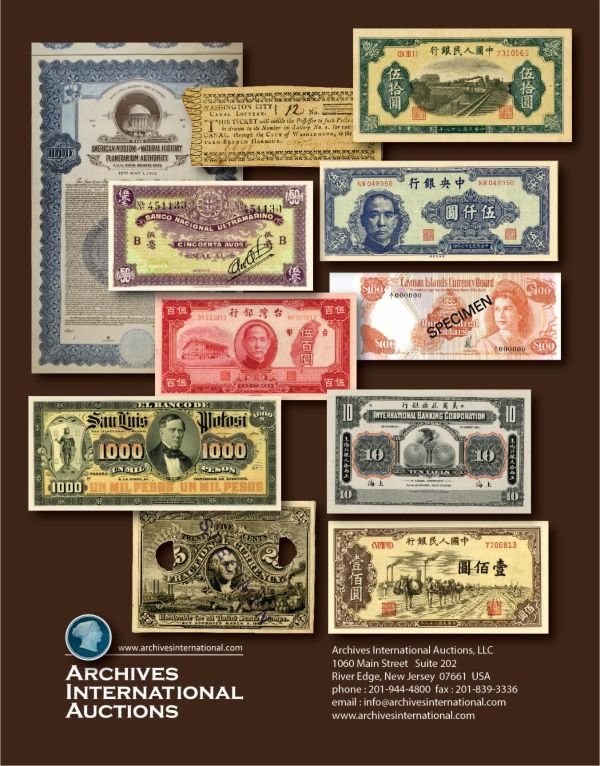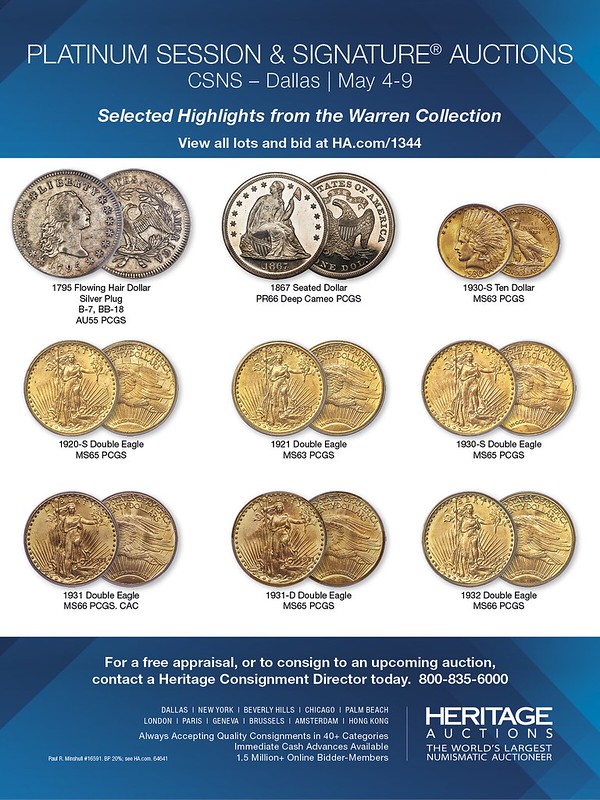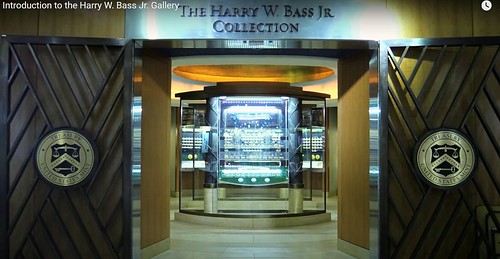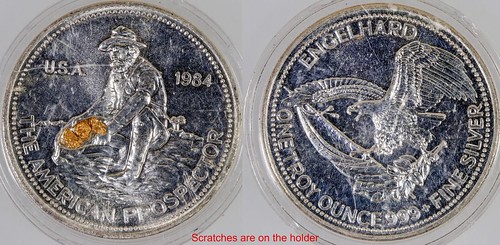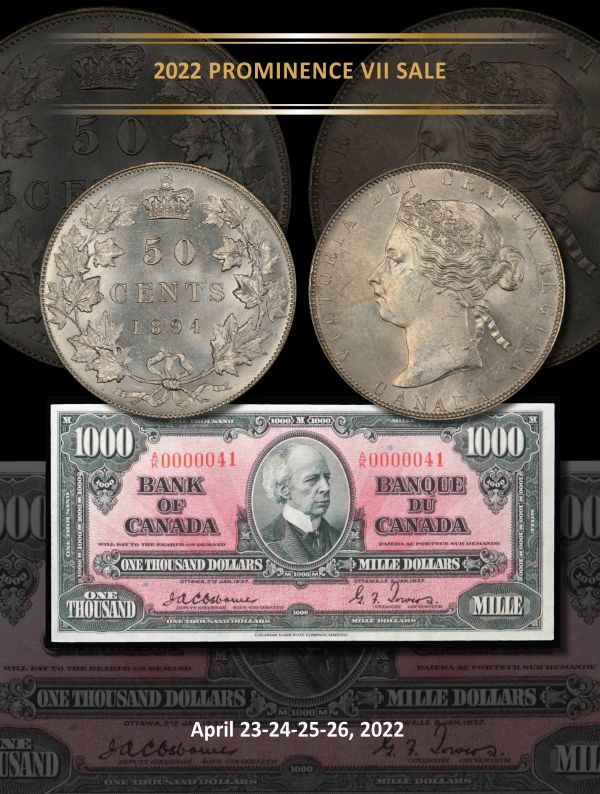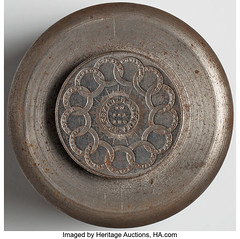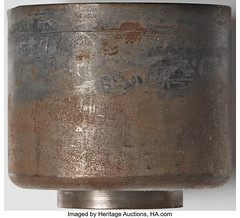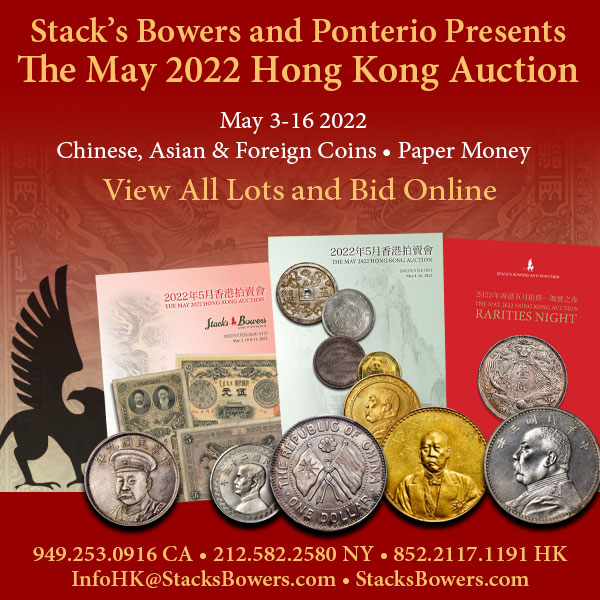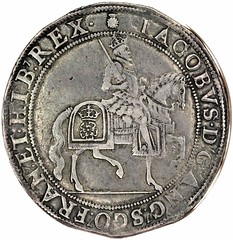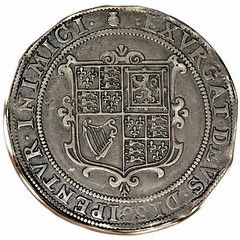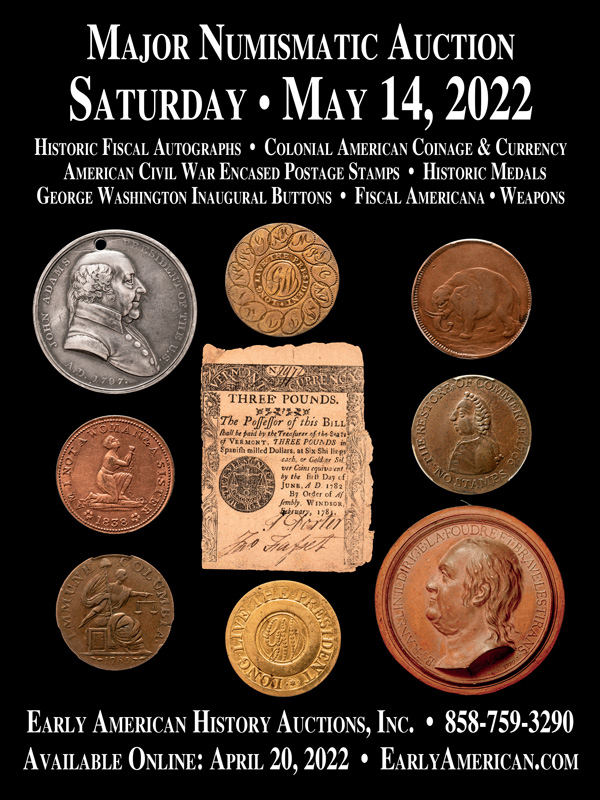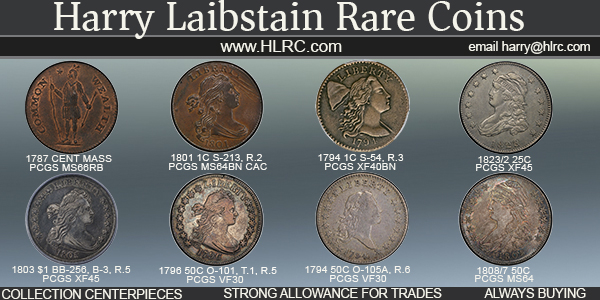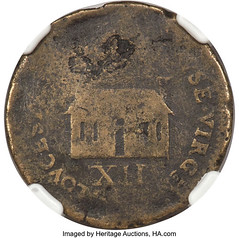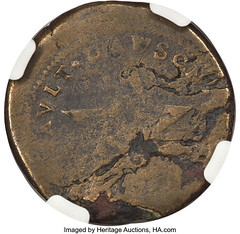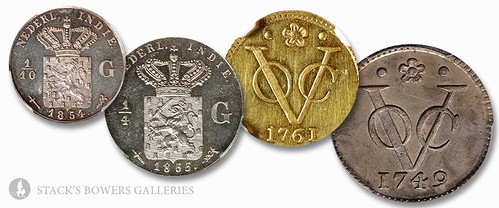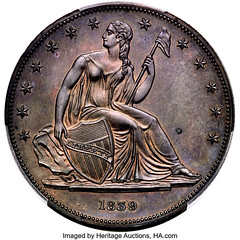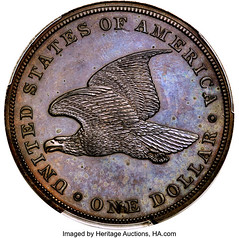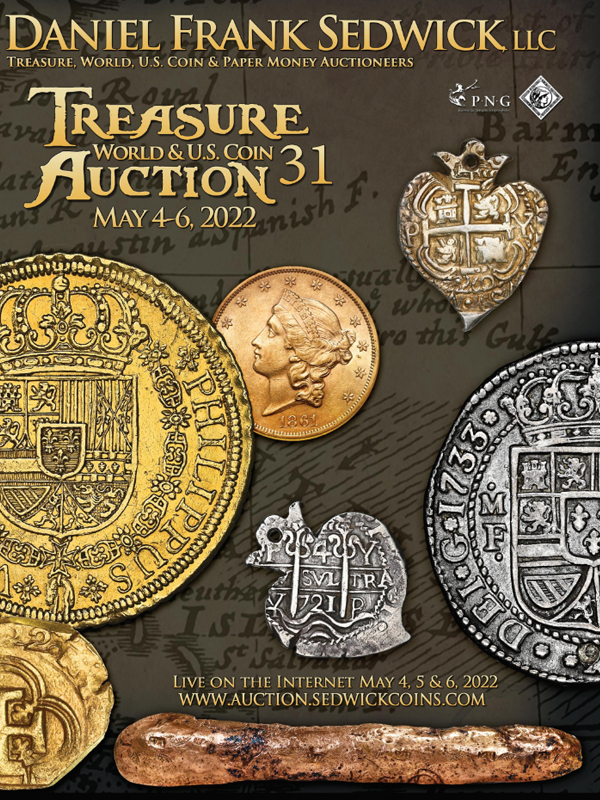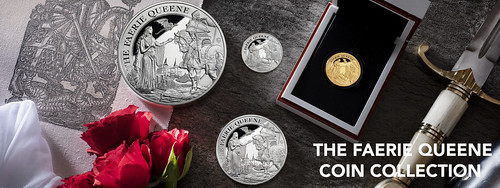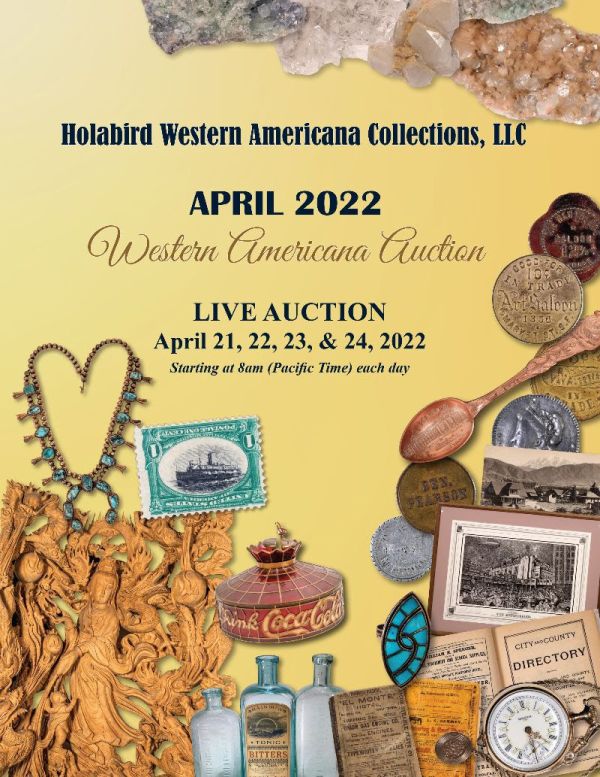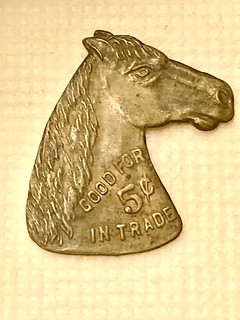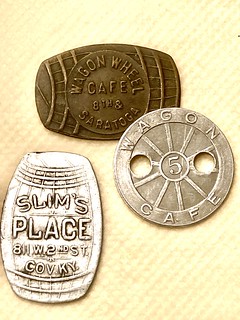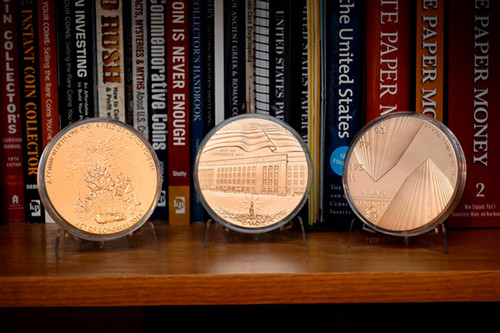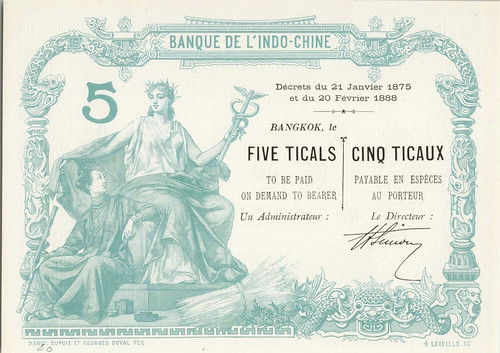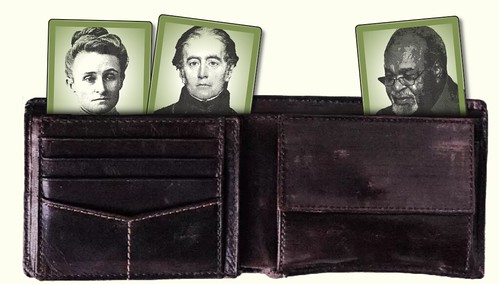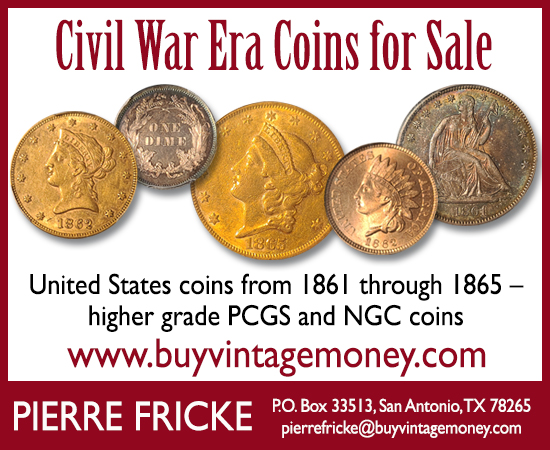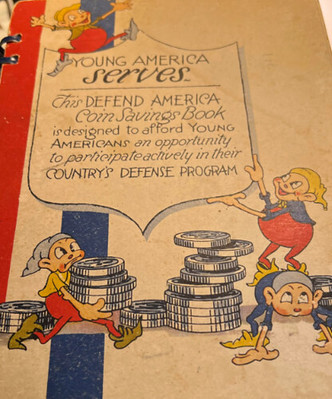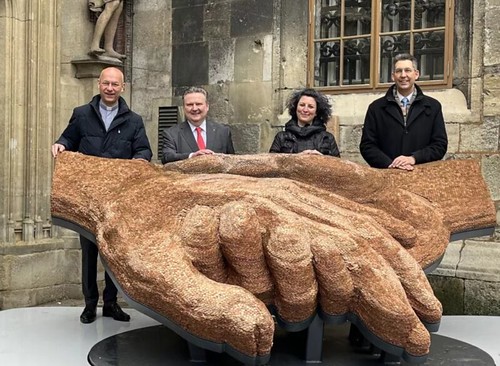
Visit our NBS Sponsors


About UsThe Numismatic Bibliomania Society is a non-profit association devoted to the study and enjoyment of numismatic literature. For more information please see our web site at coinbooks.org SubscriptionsThose wishing to become new E-Sylum subscribers (or wishing to Unsubscribe) can go to the following web page link MembershipThere is a membership application available on the web site Membership Application To join, print the application and return it with your check to the address printed on the application. Print/Digital membership is $40 to addresses in the U.S., and $60 elsewhere. A digital-only membership is available for $25. For those without web access, write to: Charles Heck, Treasurer AsylumFor Asylum mailing address changes and other membership questions, contact Chuck at this email address: treasurer@coinbooks.org SubmissionsTo submit items for publication in The E-Sylum, write to the Editor at this address: whomren@gmail.com BUY THE BOOK BEFORE THE COIN |
- WAYNE'S WORDS: THE E-SYLUM APRIL 17, 2022
- MORE SYD MARTIN LIBRARY SELECTIONS
- NEW BOOK: GERMAN BANKNOTES 1874-1918, 2ND ED.
- NNP ADDS TREASURY DEPARTMENT PRESS RELEASES
- AUDIO: SHANNA SCHMIDT, LOUIS GOLINO
- THE COINAGE OF SAN SERRIFFE
- PHILADELPHIA BANK BUILDING COIN SCULPTURES
- NOTES FROM E-SYLUM READERS: APRIL 17, 2022
- U. S. POSTAGE AND FRACTIONAL CURRENCY WEBSITE
- MEDALLIC ART AS ADVERTISING IN BREWING
- VOCABULARY TERM: IMPRESSION
- HARVEY STACK'S NUMISMATIC FAMILY, PART 119
- CSNS HONORS BETH DEISHER WITH BOWERS AWARD
- BASS COLLECTION DEPARTS ANA MUSEUM
- HOLABIRD APRIL 2022 SALE SELECTIONS
- THE FRED WEINBERG COIN DIE COLLECTION
- PETER RAPP MAY 2022 SALE
- NUMISMATIC NUGGETS: APRIL 17, 2022
- ANCIENT COINS OF THE KINGDOM OF SOPHENE
- 1714 GLOUCESTER SHILLING
- DUTCH EAST INDIES COINAGE
- COPPER 1839 GOBRECHT DOLLAR JUDD-107 RESTRIKE
- MODERN UKRAINIAN COINS AND MEDALS
- PRINCE CHARLES PERFORMS MAUNDY CEREMONY
- THE FAERIE QUEENE COINS BY JOEL ISKOWITZ
- THE WHIMSICAL TOKENS OF NORTHERN KENTUCKY
- LARGE BRONZE SEPTEMBER 11TH MEDALS
- 2022 AMERICAN MEDAL OF THE YEAR AWARDS
- SIAM 5 TICALS WITH FRENCH INDO-CHINA BACK
- WHO'S IN YOUR WALLET?
- THE DEFEND AMERICA COIN SAVINGS BOOK
- LOOSE CHANGE: APRIL 17, 2022
- SCULPTURE MADE FROM 1 MILLION EURO CENTS
Click here to read the thin version on the web
Click here to subscribe
Click here to access the complete archive
To comment or submit articles, reply to whomren@gmail.com
Content presented in The E-Sylum is not necessarily researched or independently fact-checked, and views expressed do not necessarily represent those of the Numismatic Bibliomania Society.
WAYNE'S WORDS: THE E-SYLUM APRIL 17, 2022
 New subscribers this week include:
Mike Costanzo and
Jason Smith.
Welcome aboard! We now have 6,982 subscribers.
New subscribers this week include:
Mike Costanzo and
Jason Smith.
Welcome aboard! We now have 6,982 subscribers.
C'mon - help us get to 7,000! Please send me the email addresses of friends you think may enjoy it as well and I'll send them a subscription. Contact me at whomren@gmail.com anytime regarding your subscription, or questions, comments or suggestions about our content.
This week we open with more Syd Martin library selections, one new book, an update from the Newman Numismatic Portal, notes from readers, and more.
Other topics this week include German banknotes, the Philadelphia Wells Fargo Museum, postage and fractional currency, the Harry Bass collection, auction previews, numismatic nuggets, the Gloucester shilling, Ukrainian coins and medals, the Faerie Queene coins, the American Medal of the Year, and the Defend America Coin Savings Book.
To learn more about the New Haven Restrike dies, Shanna Schmidt, Louis Golino, the coinage of San Serriffe, the Soviet Peace Committee medal, the New Haven Italian Circle token, foil impressions, the Republican Dollar, the Pacific Coast Numismatic Society token of esteem, the Bryan Dime, the James I horseman crown, King Xerxes, Dutch East Indies coinage, the John Lewis medal, and the sculpture made from 1 million Euro cents, read on. Have a great week, everyone!
Wayne Homren
Editor, The E-Sylum
THE BOOK BAZARRE
MORE SYD MARTIN LIBRARY SELECTIONS
Here are some more highlights from the Syd Martin library, being sold by Kolbe & Fanning April 30, 2022. -Editor
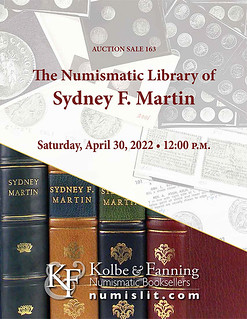 Kolbe & Fanning Numismatic Booksellers will be selling the outstanding library formed by Sydney F. Martin on April 30, 2022. The Martin Library is one of the finest formed on the subject of early American coinage, and includes many titles on related areas of European numismatics as well. The sale has been generating considerable interest and promises to be an exciting event.
Kolbe & Fanning Numismatic Booksellers will be selling the outstanding library formed by Sydney F. Martin on April 30, 2022. The Martin Library is one of the finest formed on the subject of early American coinage, and includes many titles on related areas of European numismatics as well. The sale has been generating considerable interest and promises to be an exciting event.
Some highlights of the sale include:
NEW BOOK: GERMAN BANKNOTES 1874-1918, 2ND ED.
Here's a Google-translated article from the Geldscheine Online newsletter about a new book on German banknotes. -Editor
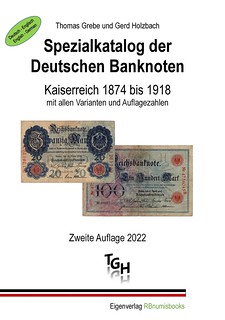 Thomas Grebe and Gerd Holzbach
Thomas Grebe and Gerd Holzbach
Special catalog of German banknotes from the Kaiserreich from 1874 to 1918 with all variants and edition numbers
124 pages, illustrated in color and black and white throughout,
Format 21 cm x 29.7 cm, paperback,
Goldbach 2022
Price: 24.90 euros
ISBN: 978-3-94995-800-7
The authors' special catalogue, bilingual in German and English, on Reichsbanknotes and Reichs- and Darlehnskassenscheine of the German Empire has already been published in its second edition.
NNP ADDS TREASURY DEPARTMENT PRESS RELEASES
The latest addition to the Newman Numismatic Portal is a collection of Treasury Department press releases. Project Coordinator Len Augsburger provided the following report. Thanks. -Editor
Gold Coin Circulation in 1917
AUDIO: SHANNA SCHMIDT, LOUIS GOLINO
Here are two podcast episodes I thought I'd mention this week. The first is an episode of The Planchet from the American Numismatic Society featuring an interview with NBS Board Member Shanna Schmidt. -Editor
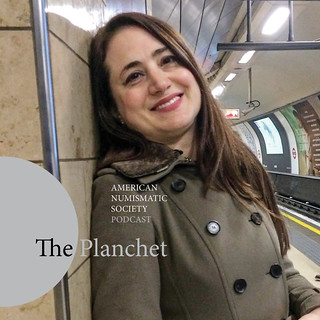 Season 3 of The Planchet podcast begins with a wide-ranging interview with Shanna Schmidt of Shanna Schmidt Numismatics. Since 2019, Shanna has been a Fellow of the American Numismatic Society and has also served as a board governor for the American Numismatic Association (ANA). She also held a board position with the International Association of Professional Numismatists (IAPN) and was a full member of the Professional Numismatists Guild (PNG). In this episode, we talk about growing up in a numismatics household, how she became a coin dealer after a career in advertising, advice to those starting a new business and to collectors new to the hobby, her work with auction representation, and her love of Chopin.
Season 3 of The Planchet podcast begins with a wide-ranging interview with Shanna Schmidt of Shanna Schmidt Numismatics. Since 2019, Shanna has been a Fellow of the American Numismatic Society and has also served as a board governor for the American Numismatic Association (ANA). She also held a board position with the International Association of Professional Numismatists (IAPN) and was a full member of the Professional Numismatists Guild (PNG). In this episode, we talk about growing up in a numismatics household, how she became a coin dealer after a career in advertising, advice to those starting a new business and to collectors new to the hobby, her work with auction representation, and her love of Chopin.
THE COINAGE OF SAN SERRIFFE
Earlier I'd asked, "Who can tell us numismatic connections to the republic of San Serriffe?" The definitive article on "The Coinage of San Serriffe" by Pete Smith appeared in the Spring 2019 issue of our print journal The Asylum. Here's an excerpt. -Editor
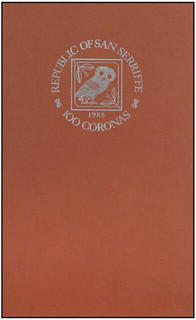 This has the best of everything we look for in numismatic literature. It is the definitive work on the topic; a limited edition with fine printing and binding; a low mintage coinage; and a fascinating story. It has a long title, The First Fine Silver Coinage of the Republic of San Serriffe:
This has the best of everything we look for in numismatic literature. It is the definitive work on the topic; a limited edition with fine printing and binding; a low mintage coinage; and a fascinating story. It has a long title, The First Fine Silver Coinage of the Republic of San Serriffe: The Bird and Bull Press Commemorative 100 Coronas Including an Account of this Legendary Republic and its Connection with the Bull and Bird Press. With a description of similar rarities and special mention of Martin Coles Harmon, King of Lundy Island. By Henry Morris.
It was published in 1988.
The work includes two parts in a slipcase. The first item has text printed on French mouldmade Arches paper by the Bird and Bull Press. The second item is a folder with examples of the coinage.
PHILADELPHIA BANK BUILDING COIN SCULPTURES
Regarding last week's image of a Fugio Cent on a Philadelphia bank building, Craig McDonald writes:
"The image of the Fugio obverse on the bank building in Philadelphia brought back some memories.
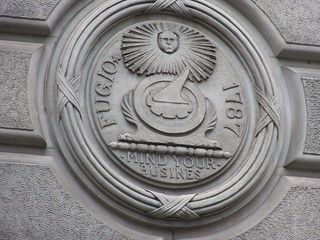 "I worked for the company that managed the computer systems for (at the time) Fidelity Bank, located in that building. The datacenter was on the fourth floor.
I traveled to that building once a week for several years, and ashamedly have to admit that I never looked up to see the artwork.
"I worked for the company that managed the computer systems for (at the time) Fidelity Bank, located in that building. The datacenter was on the fourth floor.
I traveled to that building once a week for several years, and ashamedly have to admit that I never looked up to see the artwork.
"At the 2017 Early American Coppers Convention held just down the street from the bank building, several of us went to lunch and walked by the building. Someone pointed out the artwork. I snapped a few pictures from street level."
NOTES FROM E-SYLUM READERS: APRIL 17, 2022
Soviet Peace Committee Missile Relic Medal
Dick Grinolds writes:
"This tragically ironic Russian medal came in this week - I thought it might be of interest in the current international climate. It doesn't seem that long ago when my flight home had to circle for 45 minutes while Mikhail Gorbachev landed ahead of us on a good will trip to Minneapolis. Things change.
"Highly polished aluminum, 40mm, one of the most unusual relic or "made from" items I've handled."
O. Soviet Peace Committee (Same In Cyrillic, Bell). // R. 1 Disarmament Dollar Accepted As A Token Of Friendship, 1988, Made Of Missile Metal (Same In Cyrillic)
Times (and leaders) do change. Great item. Thanks. -Editor
Other topics this week include a questionable "Congress of the C. S. A." medal, and Buying Silver Coins from American GIs in WWII. -Editor
U. S. POSTAGE AND FRACTIONAL CURRENCY WEBSITE
John and Nancy Wilson write:
"While researching counterfeit U. S. Postage and Fractional Currency we came across this site. We found it very informative for both the regular and counterfeit currency."
Thanks! Here are a couple excerpts. Links below - see the site online for more. -Editor
Why Fractional Notes?
Imagine yourself a proprietor of a business in the early 1860's and a customer wants to pay for their purchases. What do you do when you don't have adequate change available? There is a shortage of coins at the bank due to the Civil War. People are hoarding the few coins that they have and others were sending them to Canada to sell for their scrap value which had risen to more than the coins were worth. These are the major reasons why you can't give proper change to your valued customers. What do you do? Do you print your own currency that is only good at your establishment? Do you accept script from another business that may not be good? This was a real problem back in the early 1860's. People and businesses did not have adequate supply of coins to keep the economy running smoothly so they reverted to creating their own form of private currency. In 1862, the federal government stepped in by issuing postage currency and later fractional currency that was widely accepted by the populace.
MEDALLIC ART AS ADVERTISING IN BREWING
Jeremy Bostwick submitted this interesting article about brewing medals and their artistic influences. Thanks! Interesting connections! -Editor
Medallic Art as Advertising in Brewing
By Jeremy Bostwick
In the world of brewing, there is no higher achievement domestically than receiving a medal, especially a first place (gold) medal, in the Great American Beer Festival—an event held annually since 1982 in Denver, Colorado. Despite being American, it nevertheless holds great weight internationally, as the United States has been at the forefront of innovations and inventiveness in craft brewing over the past three decades or so. In a way, more specialized, industry-specific trade shows such as this have taken on the role once filled by international expositions in the earlier part of the 20th or even 19th centuries. Though they still exist, the hype generated from a winning entry at a world's fair was immense in the days of yesteryear, with many companies boasting greatly about their prior win(s), even to the point of adding such a prize to their name and/or advertising.
VOCABULARY TERM: IMPRESSION
Here's another entry from Dick Johnson's Encyclopedia of Coin and Medal Terminology. I added an image. -Editor
Impression. (1) The degree of pressure causing a greater or lesser amount of relief on a struck piece; the impression is gradually increased during set-up until the amount is perfect and the pieces are fully struck up. While impression may be considered how deeply the design is impressed into the metal blank, in reality it is how completely each die cavity has been filled. In effect, that every high point is present and fully formed. Thus pressmen examine sample strikes under magnification for this perfect state of the high points and that no die draw (a flow of surface metal into, then out of, die cavities) has occurred.
THE BOOK BAZARRE
HARVEY STACK'S NUMISMATIC FAMILY, PART 119
Stack's Bowers has a backlog of the late Harvey Stack's numismatic memoir articles and will continue publishing them. In this one Harvey discusses his 1995 Banking and Finance Committee meeting appearance. -Editor
In 1995 there were many signs that the numismatic hobby was growing, from old timers adding to collections or starting new ones, to beginners entering the field for the first time. However, while traditional numismatic collectibles were doing well, there seemed to be less interest in later issues from 1990 to 1995. Proof sets and modern commemorative coins from the Mint saw a drop in orders and sales. As noted earlier, I attribute this decline to overly aggressive policies on the part of the Mint to sell more products at higher prices, when it was evident there was a poor secondary market for these items. In fact, resale value could be as low as 50% of the original costs, a great disappointment to the average buyer who had been led to believe that these special limited editions were great investments. The loss of people who might have become longtime collectors was a loss to the whole hobby.
CSNS HONORS BETH DEISHER WITH BOWERS AWARD
This press release announces that Central States is presenting its 2022 Q. David Bowers Award to Beth Deisher. -Editor
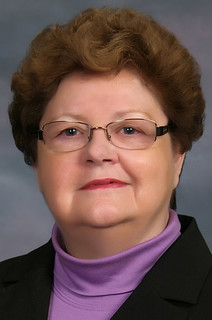 The Central States Numismatic Society is presenting its annual Q. David Bowers Award this year to well-known and respected numismatic journalist Beth Deisher of Sylvania, Ohio. She served as Editor of Coin World for 27 years until her retirement in 2012.
The Central States Numismatic Society is presenting its annual Q. David Bowers Award this year to well-known and respected numismatic journalist Beth Deisher of Sylvania, Ohio. She served as Editor of Coin World for 27 years until her retirement in 2012.
During 2017 and 2018 Deisher served the Industry Council for Tangible Assets as Director of Anti-Counterfeiting, developing and leading a task force that created educational programs and training courses to assist federal law enforcement in the investigation and prosecution of those importing and trafficking in counterfeit coins flowing from China into the United States. In 2019 she led the successful transition of the task force into the nonprofit Anti-Counterfeiting Educational Foundation, now operating under the auspices of the Professional Numismatists Guild.
The annual CSNS Bowers Award recognizes unselfish devotion, scholarly contributions, and investments of time and resources made to the hobby by numismatic professionals.
BASS COLLECTION DEPARTS ANA MUSEUM
They say all good things must come to an end. I hope that's not true in every case, but one very good thing for the ANA's Edward C. Rochette Money Museum is indeed ending it's run. This press release announces the withdrawal of the Harry W. Bass, Jr. collection from the Colorado Springs museum. -Editor
The American Numismatic Association (ANA) and the Harry W. Bass, Jr. Foundation announced today that the Harry W. Bass, Jr. collection of U.S. gold coins and patterns on display at the Edward C. Rochette Money Museum in Colorado Springs, Colo., will be returned to the Foundation and sold at auction. The Money Museum has been this collection's temporary home since October 2000.
HOLABIRD APRIL 2022 SALE SELECTIONS
Here are some lots that caught my eye in the upcoming Holabird sale. -Editor
The very popular one ounce silver round with a gold panning miner dubbed "The American Prospector" made by Engelhard.999+ fine silver, in hard plastic case with a tiny gold nugget added to the miner's pan. City: State: Date:1984
THE FRED WEINBERG COIN DIE COLLECTION
On May 2, 2022 Heritage is offering the Fred Weinberg Coin Die collection. Here are some lots that caught me eye. -Editor
Undated Continental Dollar Restrike Reverse Die Uncertified.
Which restrike is this, though? -Editor
To read the complete lot description, see:
Undated Continental Dollar Restrike Reverse Die Uncertified. . From The Fred Weinberg Collection.
(https://coins.ha.com/itm/so-called-dollars/undated-continental-dollar-restrike-reverse-die-uncertified-from-the-fred-weinberg-collection/a/63183-91246.s)
PETER RAPP MAY 2022 SALE
Here's a press release with some highlights of the May 6, 2022 sale by Peter Rapp AG in Switzerland. -Editor
On 6 May 2022, Rapp will hold its numismatic auction sale. Connoisseurs can look forward to individual specimens as well as collections, including lots with bullion gold. The numismatic auction is one of many highlights of Rapp's auction week with stamps, watches, jewellery and more.
NUMISMATIC NUGGETS: APRIL 17, 2022
Here's a selection of interesting or unusual items I came across in the marketplace this week. Tell us what you think of some of these. -Editor
(x) NGC VF35 | James I (1603-1625), First Coinage, Crown, 24 March 1603 - 22 May 1604, Tower, (m.m.) • IACOBVS • D .' G .' ANG .' SCO .' FRAN .' ET • HIB .' REX •, King on horseback trotting right, ground line below, rev. (m.m.) • EXVRGAT • DEVS • DISSIPENTVR • INIMICI •, square-topped and lightly garnished shield, 29.59g, 2h, m.m. thistle (FRC II/III, lot 17; North 2070; Spink 2643),
A nice James I Horseman crown offer by SPINK in the upcoming David Hoover Collection of Crowns: 1551-1953. -Editor
To read the complete lot description, see:
NGC VF35 | JAMES I (1603-1625), FIRST COINAGE, CROWN, 24 MARCH 1603 - 22 MAY 1604, TOWER
(https://live.spink.com/lots/view/4-5NW51J/ngc-vf35-james-i-1603-1625-first-coinage-crown-24-march-1603-22-may-1604-tower)
Other topics this week include the 1797 Small Eagle Dollar, and the 1909 "Black Dragon" 5 Yuan Note. -Editor
ANCIENT COINS OF THE KINGDOM OF SOPHENE
If you're like me, you've learned far more about history and geography from numismatics than you ever did in school. This article by Steve Benner for CoinWeek is a great example. Check it out to learn about the Kingdom of Sophene. Here's an excerpt - see the complete article online for much more. -Editor
The Kingdom of Sophene is another one of those ancient countries that has not received very much attention from ancient coin collectors. Usually, it is just lumped in with Armenia because it was absorbed into the Armenian Empire by Tigranes II the Great (140–55 BCE) after 95 BCE. But Sophene had its own unique history and distinctive coinage.
1714 GLOUCESTER SHILLING
"A rarity of the highest order", says the catalog, and I have to agree. With only two known examples, the Gloucester 'Shilling' is about as rare as they come. Offered by Heritage in their upcoming May 4-8 2022 Central States sale. From The Long Island Collection, Part III. -Editor
1714 Gloucester Shilling Fine 12 NGC. Breen-237, W-8180, R.8. Ex: Long Island Collection. The 1714 Gloucester shilling is an issue collectors come to know through osmosis, generally after years of flipping through the pages of the annual Guide Book. It is not an issue they are ever likely to have encountered "in the wild." The example offered here, last seen publicly 40 years ago, is one of only two pieces known to the numismatic community.
Sylvester Sage Crosby documented the 1714 Gloucester shilling in his 1875 opus, Early Coins of America, where he wrote:
DUTCH EAST INDIES COINAGE
Stack's Bowers Numismatist for World and Ancient Coins Nicholas Fritz published a blog article on Dutch East Indies coinage, including the Dutch East India Company pieces. A number of Dutch East Indies rarities will be offered the firm's May Hong Kong Sale. -Editor
The Dutch Colonial Empire is often forgotten when compared to the larger empires of the British, French, and Spanish. However, the Dutch Empire has left a legacy that can be seen in some unexpected places. One of the official languages of South Africa is Afrikaans, which derives nearly all its words from the Dutch language, highlighting South Africa's Dutch Colonial past. Manhattan Island was purchased by Dutch explorer Peter Minuit for 60 Guilders in 1626, despite the concept of private property ownership being unknown to the Native tribes inhabiting the Island and the surrounding area.
COPPER 1839 GOBRECHT DOLLAR JUDD-107 RESTRIKE
A great Gobrecht dollar pattern is coming up for sale. -Editor
1839 P$1 Name Omitted, Judd-107 Restrike, Pollock-119, Unique, PR65 Brown PCGS. Ex: Simpson. Copper. Plain Edge. Stars Obverse, No Stars Reverse. Die Alignment III (head of Liberty opposite the N in ONE). Die State A. Judd-107 is essentially a Judd-105 struck in copper. While struck in different metals, both the Judd-105 and 107 share the same starless reverse and plain edge. The reverse die cracks are microscopic, but located left of M and extending through MERI terminating to the right of I, connecting the tops of NITED, and through the bottom of LAR. The die spur on the right side of the D in UNITED is also present as well as the depression in the field below and to the right of the F in OF. Several stars on the left side of the obverse are double-punched: star 3 slightly, 5 and 8 (both show considerable rotation). This is the same star repunching as seen on Judd-104s. At the microscopic level there is pimply evidence of die rust, undoubtedly from using a 30-40 year-old pair of dies.
MODERN UKRAINIAN COINS AND MEDALS
Louis Golino published a CoinWeek article on modern Ukrainian coinage. Here's an excerpt - see the complete article online. -Editor
Until the Russian Invasion of Ukraine that began on February 24, Ukrainian coins were most widely collected in Ukraine itself and other European countries. But with the war having transfixed much of the world's population, interest in the country and its coinage appears to be experiencing an increase. This is especially the case for the coins of modern Ukraine, those issued since Ukraine achieved its independence from the former USSR in 1991.
Some of this interest stems from people's curiosity about this large country with a storied history they may not have known much about before, while some of it stems from a desire to help the war-torn nation in the way collectors know best – by buying coins!
PRINCE CHARLES PERFORMS MAUNDY CEREMONY
As noted last week, Queen Elizabeth II withdrew from this year's Royal Maundy service. Prince Charles represented the Queen at the traditional coin-giving ceremony. -Editor
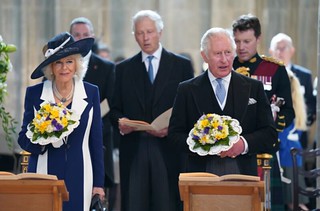 On behalf of The Queen, The Prince of Wales and Duchess of Cornwall attended the Maundy Service at St George's Chapel yesterday.
On behalf of The Queen, The Prince of Wales and Duchess of Cornwall attended the Maundy Service at St George's Chapel yesterday.
It marks the first time since 1970 that The Queen has not attended the service, after suffering recent mobility issues. In total, she has missed the Service four times, due to overseas tours and the birth of her two youngest children.
THE FAERIE QUEENE COINS BY JOEL ISKOWITZ
Coin designer Joel Iskowitz is producing a new Faerie Queen coin series for the East India Company. -Editor
The East India Company Collection's new Faerie Queen coin series sees this epic medieval tale of honour, chivalry, love and virtue reimagined by one of the world's leading coin designers, Joel Iskowitz.
First published in 1590, Edmund Spenser's epic poem The Faerie Queene is a classic work of medieval English literature. At over 36,000 lines long, its six books contain one of the longest poems in the English language, believed to be an allegory of the life of Queen Elizabeth I.
THE WHIMSICAL TOKENS OF NORTHERN KENTUCKY
I missed this one last month - in his "From the Colonel's Desk" column on Coin Update, Dennis Tucker featured an article by Col. John Riley on some unusual tokens of northern Kentucky. Here's an excerpt - see the complete article online. -Editor
LARGE BRONZE SEPTEMBER 11TH MEDALS
In my college days I worked as a programmer for a cancer research project at the University of Pittsburgh. I've long forgotten what was in it, but one day I was carrying a box and asked coworkers to "guess what's in it?" Knowing about my hobby, one woman asked, "A really big coin?"
Bless her heart. It wasn't a yap stone, but I was reminded of that long-ago conversation after seeing this Greysheet article by James Bucki on the large-size bronze versions of the September 11th Congressional Gold Medals. Here's an excerpt - see the complete article online. Bigger is better, even when it comes to medals. -Editor
My coin collecting journey of fifty years has taken me to various destinations. Like many collectors, I started out collecting Lincoln cents as an ambitious ten-year-old. Fast forward about twenty years, and my disposable income increased dramatically. I collected proof sets, Jefferson Nickels, Roosevelt dimes, type sets, world coins, and many more.
Recently I ventured into the world of exonumia. I acquired all three of the three-inch Fallen Heroes of September 11th Bronze Medals. Their size and weight are impressive. But what is more impressive is the extreme detail that is visible to the naked eye. The medal's true artistic beauty and symbolism of this tragic event shines through in these large-format medals.
2022 AMERICAN MEDAL OF THE YEAR AWARDS
Mel Wacks forwarded this announcement from the American Medallic Sculptors Association. Thanks. -Editor
Save Our Planet from Covid-19Medal by Keiko Kubota-Miura Wins
the 2022 American Medal of the Year (AMY) Award
The American Medallic Sculptors Association (AMSA) has announced that Keiko Kubota-Miura has won the 2022 American Medal of the Year (AMY) award for her innovative work titled Save Our Planet from Covid-19.
SIAM 5 TICALS WITH FRENCH INDO-CHINA BACK
World Banknote Auctions President Dennis Hengeveld catalogued an interesting Thailand note for their upcoming sale 25. Here's the full entry. -Editor
Thailand / Siam, Banque de l'Indochine 1888 (ND 1898) P-S101p PMG Gem UNC 65 EPQ 5 Ticals (Proof with French Indo-China Back)
Iconic and extremely rare proof or trial for Siam, printed with a back plate meant for French Indo-China
WHO'S IN YOUR WALLET?
"Who's in Your Wallet?" is a great new interactive visual essay about the famous figures represented on today's currencies around the world. They looked at a number of aspects of each figure including occupation as well as gender and whehter the figure was know as the first to do or be something. Interestingly, there are slightly more writers at the head of the list then heads of government. President who? -Editor
If you open your wallet right now, who do you see there? You're probably looking at people who made history in your country. Without even noticing, you're always carrying around reminders of prominent people in your wallet, but have you ever wondered, who gets to be on banknotes?
THE DEFEND AMERICA COIN SAVINGS BOOK
I came across this interesting book in a Reddit post. Have any of our readers seen one of these before? Who made them? When? -Editor
LOOSE CHANGE: APRIL 17, 2022
Here are some additional items in the media this week that may be of interest. -Editor
A short Coin World article by Steve Roach discusses the strong market for vintage slabs. -Editor
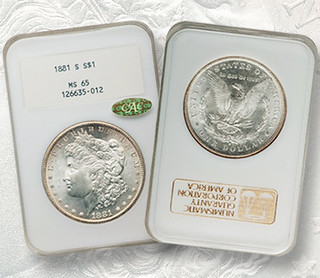 Vintage slabs from the early days of third-party coin grading continue to be hot sellers at auction, as seen in several auctions at GreatCollections and an online auction at Heritage that focused on vintage and unusual slabs.
Vintage slabs from the early days of third-party coin grading continue to be hot sellers at auction, as seen in several auctions at GreatCollections and an online auction at Heritage that focused on vintage and unusual slabs.
Heritage sold an 1881-S Morgan silver dollar — the most common date in the series in nicer Mint State grades — graded Mint State 65 by Numismatic Guaranty Co. for a hefty $5,040 on March 7.
Sans the early slab, the 1881-S typically sells for $200 or so. -Editor
To read the complete article, see:
Market Analysis: Strong market for vintage slabs
(https://www.coinworld.com/news/us-coins/market-analysis-strong-market-for-vintage-slabs)
Other topics this week include Slavery & the Bank of England, and the 1903-O silver dollar. -Editor
SCULPTURE MADE FROM 1 MILLION EURO CENTS
Now that's a lotta coin! A sculpture was created from 1 million Euro cents. -Editor
A sculpture made of one million European one-cent coins worth 100,000 Euros and weighing up to four tons has been set up in the heart of the Austrian capital Vienna.
Artist Julia Bugram glued the coins together as a pair of hands holding on to each other as a way of raising awareness of the need for solidarity.
The hefty work of art has been installed next to St. Stephen's Cathedral (Stephansdom) in the center of Vienna and it will remain there until at least June.

